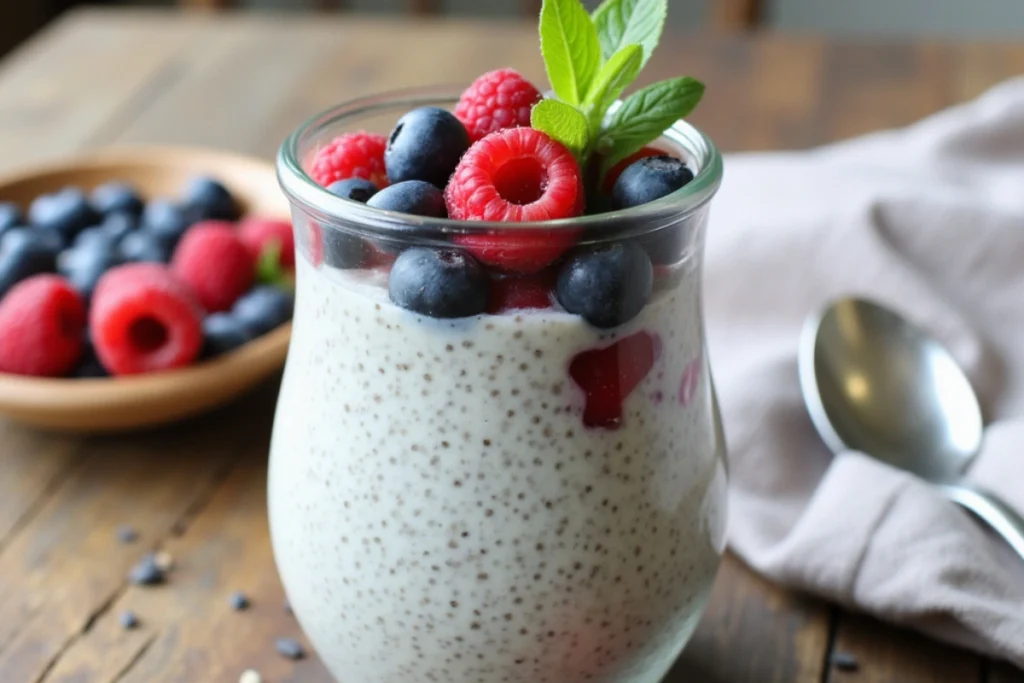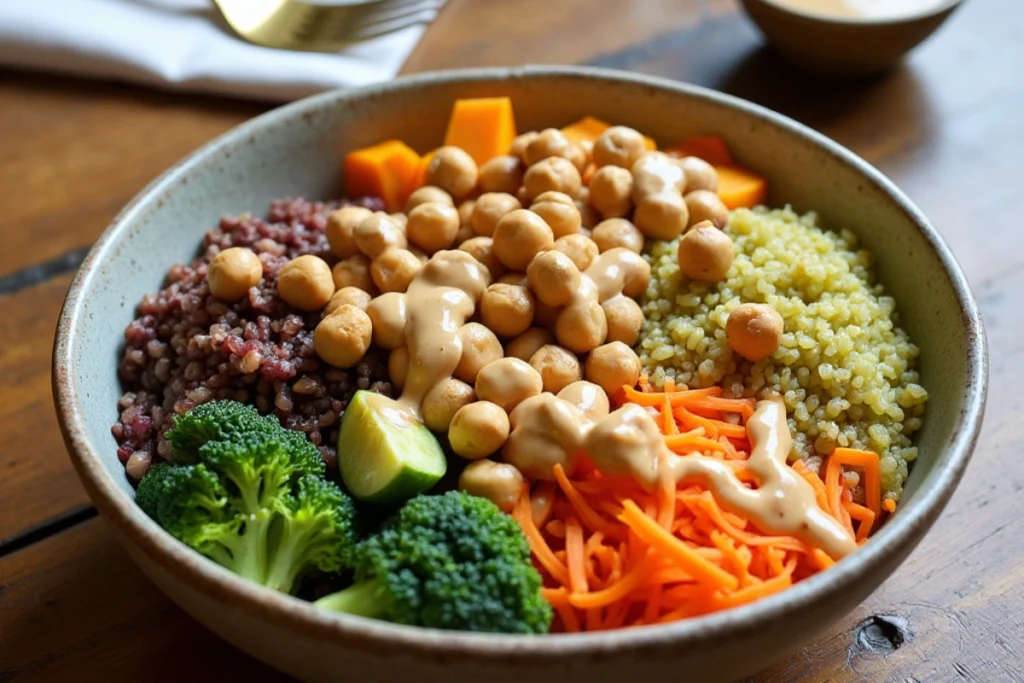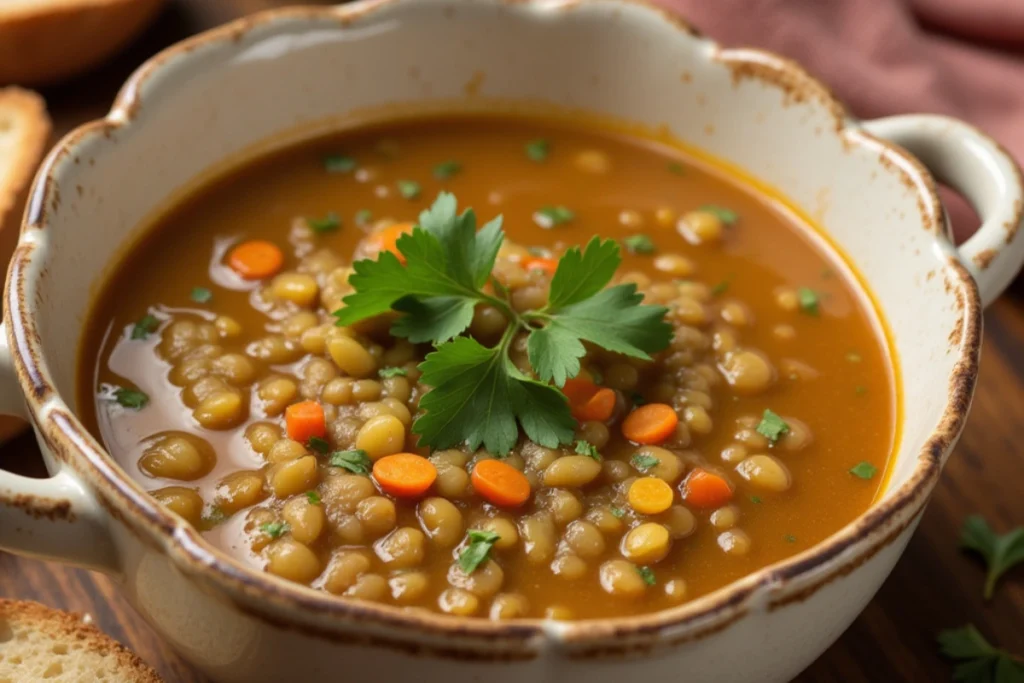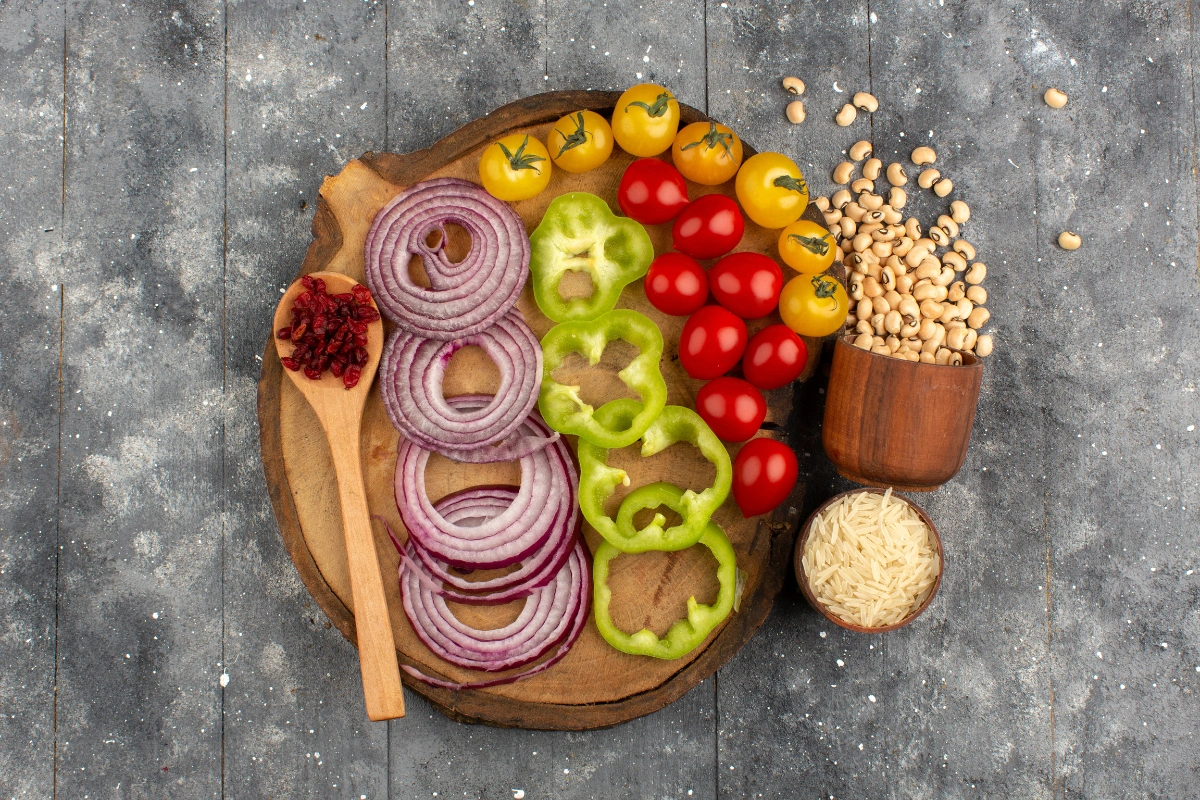Exploring dietary choices can be a fascinating journey, especially when navigating vegan and gluten-free options. This article delves into the exciting intersection of these diets, showcasing practical, tasty alternatives. Whether you’re here for health, ethics, or curiosity, the ultimate guide to vegan gluten-free recipes offers insights into creating flavorful dishes that align with both diets.
Introduction
What is a Vegan Alternative to Gluten-Free Food?
Vegan and gluten-free diets have become increasingly popular for their distinct benefits. A vegan diet excludes all animal products, while a gluten-free diet eliminates gluten, a protein found in grains like wheat, barley, and rye. Combining the two can seem tricky, but it’s entirely achievable with the right guidance.
Why Choose Vegan Alternatives to Gluten-Free Food?
People pursue these dietary lifestyles for various reasons:
- Health motivations: Gluten intolerance or sensitivity and the desire to avoid animal products.
- Ethical reasons: Compassion for animals and environmental sustainability.
- Culinary diversity: Exploring creative, plant-based meals that are also free of gluten.
Understanding Gluten-Free and Vegan Diets
What is a Gluten-Free Diet?
A gluten-free diet eliminates all foods containing gluten, a protein found in wheat, barley, and rye. This diet is essential for individuals with celiac disease, gluten sensitivity, or wheat allergies. Gluten-free diets are also gaining popularity among people who believe they promote better digestion and overall health. Common gluten-free staples include naturally gluten-free grains like rice, quinoa, and corn, which are frequently highlighted in vegan gluten-free recipes for their versatility and nutritional value.
What is a Vegan Diet?
A vegan diet avoids all animal-derived products, including meat, dairy, eggs, and even honey. Many people adopt veganism for ethical reasons, such as reducing harm to animals, as well as for environmental sustainability and health benefits. Vegan diets are rich in plant-based foods, such as vegetables, fruits, nuts, seeds, and legumes, which provide essential nutrients and fiber.
Overlap Between Vegan and Gluten-Free Diets
At first glance, it may seem that a vegan and gluten-free diet have little in common, but there are plenty of shared foods and ingredients. Staples like fresh fruits, vegetables, legumes, and certain grains (e.g., quinoa, millet, and amaranth) fit into both diets seamlessly. The key challenge arises with processed foods, where gluten and animal-derived ingredients can lurk in unexpected places. To manage these overlapping dietary needs, naturally gluten-free and plant-based foods, such as those featured in vegan gluten-free recipes and vegan casserole dish recipes, provide a reliable strategy.
Exploring Vegan Alternatives to Gluten-Free Foods
Common Gluten-Free Foods and Vegan Substitutes
When adopting a vegan and gluten-free lifestyle, it’s essential to identify foods that fit both categories. Many naturally gluten-free foods are also vegan, making them perfect for your diet. For example, grains like quinoa, millet, and amaranth are versatile and nutrient-rich . Legumes, including lentils and chickpeas, serve as excellent sources of plant-based protein . Nuts, seeds, and vegetables also play a key role in both diets, offering diverse textures and flavors .
For processed foods, check labels carefully to avoid hidden gluten and non-vegan ingredients. Gluten-free bread, pasta, and snacks made with ingredients like almond flour or rice flour are widely available, and many brands offer vegan options as well.
Gluten-Free Flours with Vegan Applications
Flour is a foundational ingredient in many recipes, and there are plenty of gluten-free flours that align with a vegan diet. Almond flour, coconut flour, chickpea flour, and oat flour are popular choices. Each type of flour has unique properties, so selecting the right one depends on the dish you’re making. For instance, chickpea flour is excellent for savory recipes like flatbreads, while almond and coconut flour work well in desserts.
Dairy-Free and Gluten-Free Ingredients
Dairy is often a challenge for vegans, but there are numerous plant-based and gluten-free alternatives. Vegan milk options such as almond milk, soy milk, and oat milk are ideal for cooking and baking. Coconut yogurt, cashew cream, and plant-based cheeses are also widely available and delicious. These dairy-free substitutes can easily replace traditional ingredients in recipes, ensuring your meals are both vegan and gluten-free.
Recipe Ideas and Meal Suggestions
Breakfast Options

Start your day with nourishing, gluten-free vegan breakfast ideas that are simple and satisfying.
- Quinoa Porridge: Cook quinoa with almond milk, add a drizzle of maple syrup, and top with fresh berries and chia seeds.
- Chia Seed Pudding: Mix chia seeds with coconut milk and let it sit overnight. Sweeten with agave syrup and garnish with nuts.
Lunch Ideas

Lunch options can be both hearty and nutritious without gluten or animal products.
- Rainbow Buddha Bowl: Combine quinoa, roasted sweet potatoes, steamed broccoli, shredded carrots, and chickpeas. Drizzle with tahini dressing for added flavor.
- Gluten-Free Vegan Wraps: Use gluten-free tortilla wraps filled with hummus, avocado, cucumber, shredded lettuce, and sun-dried tomatoes.
Dinner Recipes

Dinners are an opportunity to get creative with robust flavors and wholesome ingredients.
- Lentil Soup: Sauté garlic, onions, and carrots in olive oil. Add red lentils, vegetable stock, and spices like cumin and paprika. Simmer until creamy. Serve with gluten-free bread.
- Zucchini Noodles with Cashew Alfredo: Spiralize zucchini to create noodles, then toss them in a creamy cashew sauce made by blending soaked cashews, nutritional yeast, garlic, and a splash of lemon juice.
Snacks and Desserts
Snacks and desserts can be indulgent and easy to prepare while sticking to your dietary preferences.
- Energy Balls: Combine gluten-free oats, almond butter, chia seeds, and dark chocolate chips. Roll into bite-sized balls and refrigerate.
- Vegan Gluten-Free Brownies: Use almond flour and flaxseed meal to create rich, fudgy brownies sweetened with coconut sugar and a touch of vanilla extract.
Benefits of Vegan and Gluten-Free Foods
Health Benefits
Adopting a vegan and gluten-free diet can significantly boost your health when done correctly. A diet rich in whole, plant-based, and gluten-free foods is packed with essential nutrients, fiber, and antioxidants. These elements can help improve digestion, support heart health, and lower inflammation in the body. Additionally, avoiding gluten can benefit individuals with celiac disease or gluten sensitivity, alleviating symptoms like bloating and fatigue. When combined with veganism, this dietary approach also reduces cholesterol levels and the risk of chronic illnesses, such as type 2 diabetes.
Environmental Impact
Choosing vegan and gluten-free foods contributes to a sustainable future. Plant-based diets significantly reduce greenhouse gas emissions compared to animal-based diets. They also conserve natural resources, such as water and land, since plant agriculture is generally less resource-intensive. By focusing on naturally gluten-free plant foods, you support ethical food production while reducing your ecological footprint. This shift is a small but impactful step toward combating climate change and promoting global sustainability.
Tips for Shopping Vegan and Gluten-Free
How to Read Labels Effectively
Navigating the grocery aisles as a vegan and gluten-free shopper can be challenging, but mastering label reading makes it much easier. Always check the ingredient list for hidden gluten and animal-derived products. Terms like “wheat starch,” “malt extract,” or “casein” may indicate gluten or non-vegan ingredients. Additionally, look for certifications such as “Certified Gluten-Free” and “Vegan Certified” on packaging to save time and ensure suitability.
Best Places to Shop
Finding vegan and gluten-free options is now easier than ever. Specialty health food stores and online marketplaces often carry dedicated sections for these diets. Farmers’ markets are excellent for purchasing fresh, whole, plant-based produce without concerns about gluten or animal products. Some mainstream grocery stores also have a wide range of vegan and gluten-free items, particularly in the natural foods section.
Budget-Friendly Tips
Contrary to popular belief, vegan and gluten-free diets don’t have to break the bank. To save money, focus on whole, unprocessed foods like beans, lentils, rice, and seasonal produce. Buying in bulk is another effective strategy, especially for staples like quinoa, gluten-free flours, and nuts. Preparing meals at home not only saves money but also ensures you know exactly what’s going into your food. For extra savings, look for sales, coupons, or buy store-brand products that meet your dietary needs.
Addressing Challenges and Misconceptions
Are Vegan and Gluten-Free Foods Expensive?
One common misconception is that vegan and gluten-free foods are inherently expensive. While specialty items like gluten-free bread or plant-based cheese can be costly, there are plenty of affordable options. Relying on whole foods such as legumes, grains, and seasonal vegetables is a cost-effective way to sustain this diet. Additionally, preparing meals at home significantly reduces costs compared to dining out or buying prepackaged items. With smart shopping strategies, like buying in bulk or choosing generic brands, maintaining a vegan and gluten-free lifestyle can fit most budgets.
Taste and Texture Concerns
Another challenge people often face is adjusting to the taste and texture of vegan and gluten-free alternatives. For example, gluten-free bread or pasta can sometimes have a different consistency compared to their gluten-containing counterparts. However, with experimentation, you can find brands and recipes that work for you. Using flavorful spices, fresh herbs, and rich plant-based sauces can elevate your dishes and make the transition seamless. Techniques like roasting, grilling, or marinating can also enhance the taste of gluten-free and vegan meals.
Social and Dining Out Challenges
Eating out or attending social gatherings can feel daunting when following a vegan and gluten-free diet. However, with preparation, it’s entirely manageable. Before dining out, research restaurant menus or call ahead to inquire about accommodating options. Many establishments now cater to both dietary preferences. At social events, bringing a dish to share ensures you’ll have something to eat and introduces others to delicious vegan and gluten-free cuisine. Being proactive helps avoid awkward moments and ensures you can enjoy meals in any setting.
Conclusion
Recap of Key Points
Combining a vegan and gluten-free lifestyle may seem daunting at first, but it opens up a world of nutritious and delicious possibilities. By focusing on naturally vegan and gluten-free foods like fruits, vegetables, legumes, and gluten-free grains, you can create a varied and satisfying diet. Understanding how to read labels, choosing affordable options, and experimenting with recipes makes this lifestyle accessible and enjoyable.
Encouragement to Try Vegan and Gluten-Free Options
Adopting a vegan and gluten-free diet is not just a choice for better health—it’s also a way to support ethical living and environmental sustainability. With a little creativity and effort, you can enjoy meals that are flavorful, nourishing, and aligned with your dietary goals. Whether you’re new to this journey or looking for new inspiration, exploring vegan and gluten-free options is a rewarding experience. Start small, experiment, and enjoy the process of discovering what works best for you.
